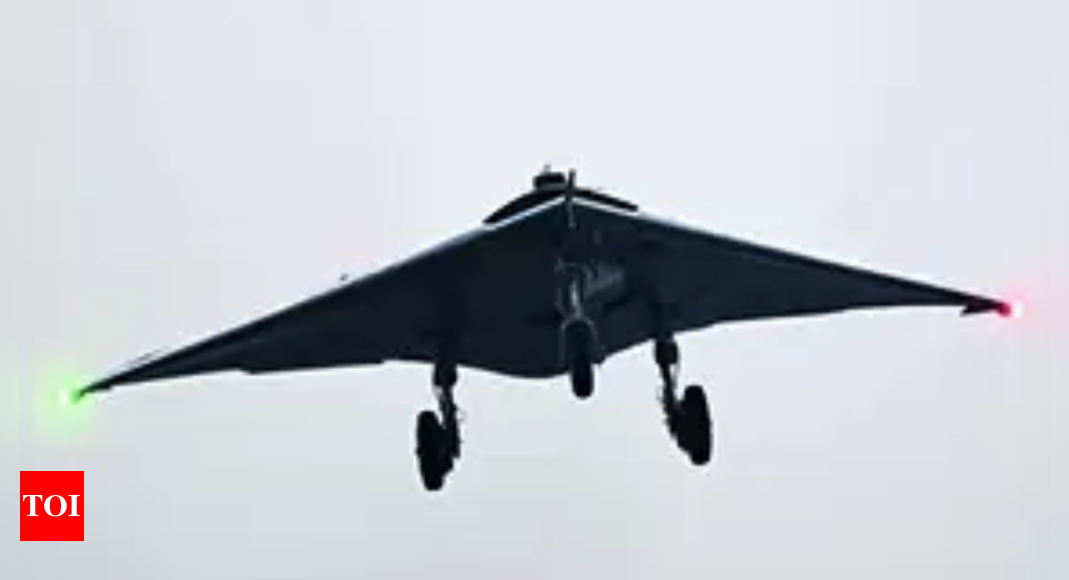[ad_1]
NEW DELHI: The initial deadline for DRDO’s Tapas project was August 2016, but there were multiple problems with the increase in the UAV’s “all-up weight” to an unwieldy 2,850kg as well the imported engine and payload issues, which led to several time overruns and cost revision to Rs 1,786 crore.
The Tapas-BH (tactical aerial platform for advanced surveillance-beyond horizon) or Tapas-201 drone did clock around 200 flights, which also saw at least two crashes, but could not meet the preliminary services qualitative requirements (PSQRs) that specified “essential and desirable” parameters.
“Tapas failed to meet essential PSQRs in terms of the altitude at which it should fly and its operational endurance. It has a flying endurance of only around 18 hours at an altitude of 28,000 feet,” a source said.
“A medium-altitude, long-endurance (MALE) remotely-piloted aircraft should be capable of operating at an altitude up to 30,000 feet for at least 24 hours. DRDO will now look at redesigning and redeveloping such a UAV,” a source said.
The closure of the Tapas project has led to some controversy, with certain sections claiming vested interests were behind the move to scuttle the indigenous effort.
The armed forces, which over the years have imported a large number of Israeli Searcher, Heron Mark-I and Mark-II drones for long-range surveillance and precision-targeting, require almost 150 new MALE UAVs.
On January 10, Adani Defence and Aerospace delivered the first MALE drone to be “made” in India called Drishti-10 Starliner, in collaboration with Israeli firm Elbit Systems, to the Navy on January 10.
The Army and Navy have ordered two each of these satcom-enabled UAVs, which are based on the Israeli Hermes 900 Starliner and have a service ceiling of 30,000 feet with an endurance of 36 hours, under emergency procurement provisions.
The Army recently also inducted four satcom-enabled Heron Mark-II UAVs to boost surveillance along the Line of Actual Control with China. There is also the ongoing push for the early finalisation of the mega $3-billion contract for 31 armed MQ-9B Reaper or Predator-B HALE (high-altitude, long-endurance) drones — 15 for Navy and eight each for Army and IAF — with the US, as was reported by TOI earlier.
The Tapas-BH (tactical aerial platform for advanced surveillance-beyond horizon) or Tapas-201 drone did clock around 200 flights, which also saw at least two crashes, but could not meet the preliminary services qualitative requirements (PSQRs) that specified “essential and desirable” parameters.
“Tapas failed to meet essential PSQRs in terms of the altitude at which it should fly and its operational endurance. It has a flying endurance of only around 18 hours at an altitude of 28,000 feet,” a source said.
“A medium-altitude, long-endurance (MALE) remotely-piloted aircraft should be capable of operating at an altitude up to 30,000 feet for at least 24 hours. DRDO will now look at redesigning and redeveloping such a UAV,” a source said.
The closure of the Tapas project has led to some controversy, with certain sections claiming vested interests were behind the move to scuttle the indigenous effort.
The armed forces, which over the years have imported a large number of Israeli Searcher, Heron Mark-I and Mark-II drones for long-range surveillance and precision-targeting, require almost 150 new MALE UAVs.
On January 10, Adani Defence and Aerospace delivered the first MALE drone to be “made” in India called Drishti-10 Starliner, in collaboration with Israeli firm Elbit Systems, to the Navy on January 10.
The Army and Navy have ordered two each of these satcom-enabled UAVs, which are based on the Israeli Hermes 900 Starliner and have a service ceiling of 30,000 feet with an endurance of 36 hours, under emergency procurement provisions.
The Army recently also inducted four satcom-enabled Heron Mark-II UAVs to boost surveillance along the Line of Actual Control with China. There is also the ongoing push for the early finalisation of the mega $3-billion contract for 31 armed MQ-9B Reaper or Predator-B HALE (high-altitude, long-endurance) drones — 15 for Navy and eight each for Army and IAF — with the US, as was reported by TOI earlier.
[ad_2]
Source link


